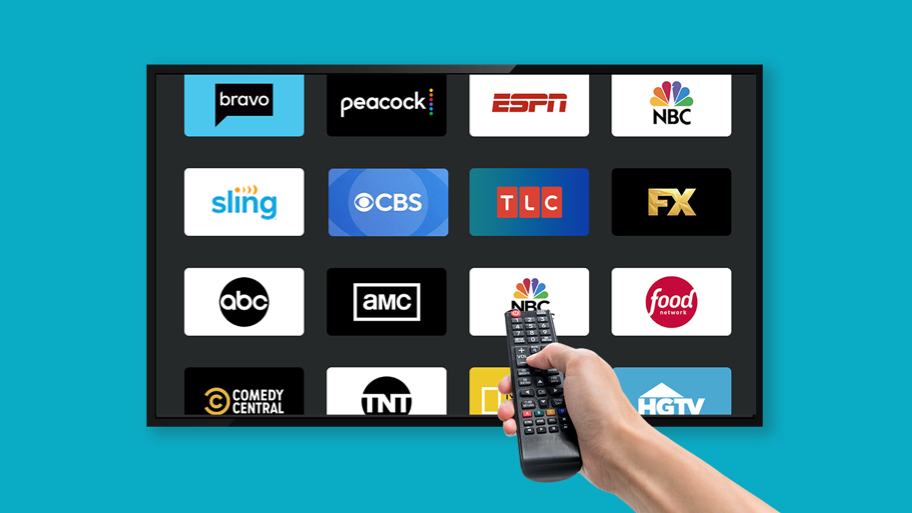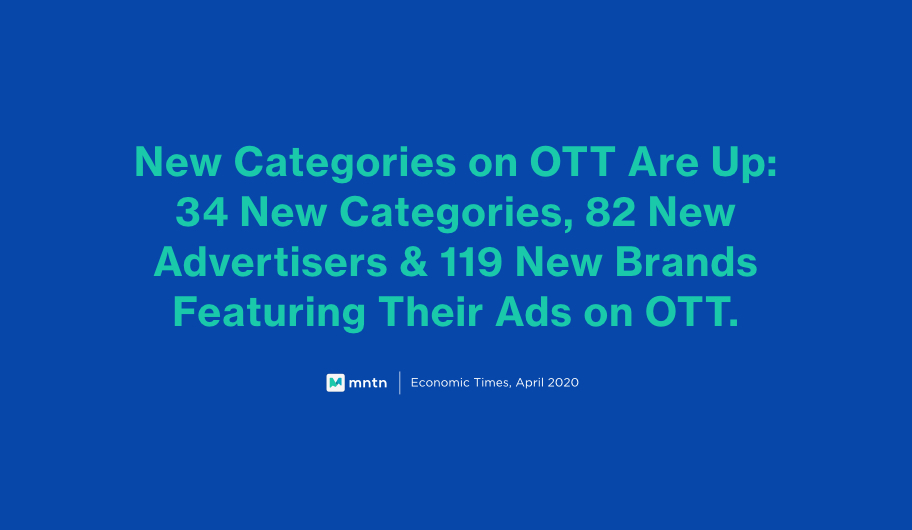From the MNTN Slack: What Netflix’s Q1 Report Signals About the Future of Streaming
by Cat Hausler
8 Min Read
CES 2024: Stagwell (STGW) and MNTN Announce Partnership in Unified Performance SolutionsLearn More
Same same, but different? Let’s clear up the confusion once and for all.

6 Min Read
While you’ve been learning more about the value and benefits of Connected TV advertising, a quick Google search may bring up some terms that you may or may not be familiar with, such as CTV and OTT.
We recently ran a survey and found that 59% of advertisers are running Connected TV ads, and over three-quarters of US households own at least one Connected TV device. In short, more people are getting acquainted with the idea that TV can be a performance marketing channel.
We created a handy guide that answers the question of what is Connected TV, along with the most commonly thrown-around industry terms. But we get asked about the difference between CTV and OTT so often that we wanted to dedicate a blog post to dissipate any debate – not that there was one to begin with, which you’ll learn about below.
CTV advertising refers to a method of advertising that targets viewers watching TV content via an internet-connected device such as a smart TV, gaming console, or streaming device. Think of connected TV as the device used rather than the content delivered.
With the rise of cord-cutting and the popularity of streaming services, connected TV advertising has become an increasingly important channel for marketers looking to reach consumers in a fragmented media landscape.
OTT advertising, or over-the-top advertising, is a method of delivering video content to viewers over the internet. In other words, it’s more so referring to the method of content delivery rather than the device.
To put it another way, OTT refers to content that goes “over” your cable box to give you access to TV content using an internet connection instead of a cable cord or satellite by traditional broadcast providers (hence the term ‘cord cutters’, which we talk about in a lot of our content).
OTT and CTV are often used interchangeably but there are subtle differences between the two, as outlined below:
When it comes to viewing content on connected TV, this can be done in two ways:
OTT content can be accessed on TV, but on any device that has an internet connection, like mobiles, desktops, tablets, and laptops. We prefer viewing this content on TV because it supports a higher-quality viewing (and advertising) experience.
If you’re still a little confused by the OTT/CTV definition, you can also think of providers like Hulu, Netflix, Amazon Prime Video, and Roku, where all you need is WiFi to connect to your favorite TV shows and you’re good to go.
This is where we get to the good stuff! CTV and OTT is more than a trend—it’s a marketing revolution. Here are just a few of the primary benefits of this type of advertising:
“I can’t advertise on TV, because it’s unattainable” is something that we hear regularly from our customers who have since moved to OTT and CTV advertising. However, to prove the naysayers wrong—OTT and CTV is for everyone.
We’re more than happy to help brands make what was once thought impossible, possible. We’ve worked with Fortune 500 companies and start-ups, on both the B2B and B2C sides looking for reasons to invest in OTT.

In case you’d like a refresher on why all brands should take up this direct-response channel, here are a couple of quick hitters:
There has been some concern surrounding the measurement of CTV and OTT advertising, particularly around whether or not it is possible to view performance across the platform and on other devices. As we mentioned, MNTN Performance TV allows advertisers to reach viewers on OTT and then retarget them with ads on their secondary devices.
CTV attribution is a big piece of the puzzle that we solve at MNTN, with our proprietary Verified Visits™ technology, which works with your brand’s sales cycle and determines when someone sees your ad, and what device they use to convert within their household.
Our platform also complements Google Analytics (a performance marketer’s other best friend, besides us), where your OTT ad performance can be viewed alongside all of your other digital marketing channels like social media, video, etc.
If there’s anything to take away here, it’s that OTT and Connected TV advertising are not the same. The big (and most important) difference is that OTT can be served on mobile and desktop, while Connected TV is served on television screens. We hope you’ve found this useful, and don’t hesitate to reach out anytime if you would like to learn more about OTT/CTV advertising.
Subscribe to the report Apple, Amazon, NBC and more use to get their CTV news.